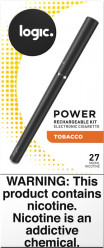

From its humble beginnings as a prototype in 1963 to the first commercially successful device created by pharmacist and inventor, Hon Lik, in 2004, the electronic cigarette has since engendered major disruptions in the tobacco industry, with small start-ups as well as large corporations vying for a slice of this highly lucrative emerging market.
While in its infancy, the nascent e-cigarette industry enjoyed a rather laissez-faire approach, which enabled it to enjoy significant growth. However, governments are now attempting to regulate the industry, and we are witnessing vastly different approaches in the UK and the US.
Why Regulate the E-Cigarette Industry?
The need for regulation stems from the idea that although free-market forces provide a competitive marketplace where customers can exert influence on businesses, consumers still require government protection since a business’ primary concern is its profitability, as opposed to the safety of its clients.
The UK Approach
In the UK, the focus has been on the well-being of current or ex-smokers and on combating preventable diseases such as lung cancer and heart disease caused by smoking.
Following research conducted by Public Health England (PHE), the National Health Service (NHS) has taken the stance that e-cigarettes are a less harmful alternative to combustible tobacco and has endorsed their use as an effective smoking cessation method. With the customer’s best interest at heart, it has even gone so far as to encourage health officials to collaborate with vapers and vapor businesses to aid smokers to make the switch.
The US Approach
In the US, the war on nicotine has tobacco control lobbyists conflating the dangers of smoking tobacco and the use of e-cigarettes, giving rise to the vilification of vaping, despite the fact that evidence shows that e-cigs are 95 percent less damaging than conventional cigarettes. In addition, US legislators tend to view vaping as a gateway to smoking even though studies like the one quoted earlier found that the majority of the adults using e-cigs in the UK are current or ex-smokers.
With blatant fear and misinformation driving policy, it comes as no surprise that the Tobacco Control Act, passed in 2009 and supported by Philip Morris International (PMI), requires US Food and Drug Administration (FDA) approval for vaping products, regardless of the fact that vapor juice contains no tobacco. This has added significant costs and longer approval delays for the e-cigarette industry while big tobacco companies such as PMI, offering an alternative device that uses heated tobacco leaf, benefits from a smoother and faster approval process. This raises the question of whether customer well-being is truly what’s driving e-cigarette regulation in the US.
What are your thoughts about the regulation of the e-cigarette industry? Tell us by commenting below, or tweet us @ILoveECigs.














